mobile Ansicht, to the English Version tap the flag
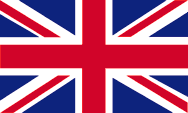

- Demokratische Republik Osttimor
- präsidiale Republik
- Eigenbezeichnungen:
– Portugiesisch: Timor Leste
– Tetum: Timor Loro Sa'e
– Indonesisch: Timor Timur
- · bis 1976 portugiesische Kolonie
· bis 1999 indonesische Provinz
· seit 20.05.2002 unabhängig
• Flagge
• historische Flaggen
• Bedeutung/Ursprung der Flagge
• Wappen
• Bedeutung/Ursprung des Wappens
• Landkarte
• Zahlen und Fakten
• Geschichte
• Ursprung des Landesnamens
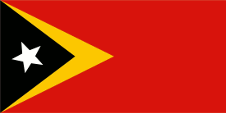
National-, Staats und Handelsflagge,
Seitenverhältnis = 1:2,
Quelle, nach: Flags of the World





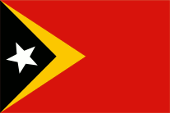
Variante in abweichenden Proportionen,
Seitenverhältnis = 2:3,
Quelle, nach: Flags of the World




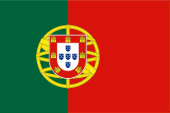
1911–1976,
Nationalflagge Portugals,
Seitenverhältnis = 2:3,
Quelle, nach: Corel Draw 4





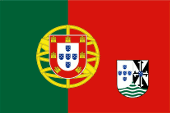
60-er Jahre 19. Jhd.,
geplante Flagge für Portugiesisch-Timor,
Seitenverhältnis = 2:3,
Quelle, nach: Wikipedia (DE)



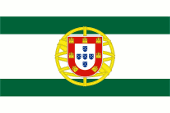
bis/to 1935,
Flagge eines Oberkommissars,
Seitenverhältnis = 2:3,
Quelle, nach: Flaggenbuch 1939



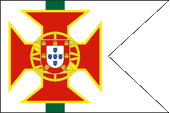
1935–1961,
Flagge eines Distriktskommandanten,
Seitenverhältnis = 2:3,
Quelle, nach: Flaggenbuch 1939



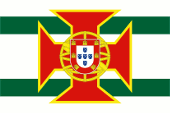
1935–1975,
Flagge des Generalgouverneurs,
Seitenverhältnis = 2:3,
Quelle, nach: Die Welt im bunten Flaggenbild



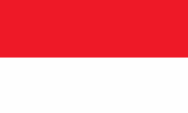
1975–1999,
Osttimor gehört zu Indonesien,
National-, Handels und Marineflagge Indonesiens,
Seitenverhältnis = 3:5,
Quelle, nach: Flaggen und Wappen





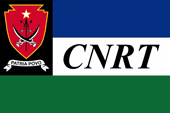
1998–2001,
Flagge des CNRT,
Seitenverhältnis = 2:3,
Quelle, nach: Wikipedia (DE)



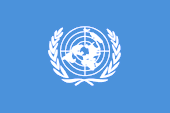
1999–2002,
Osttimor wird von der UNO verwaltet,
Seitenverhältnis = 2:3,
Quelle, nach: Wikipedia (EN)






Die heutige Flagge Osttimors ist exakt die gleiche Flagge, wie sie bei der Erklärung der Unabhängigkeit am 28.11.1975 angenommen wurde. Sie wurde am 20.05.2002 offiziell wieder eingeführt, und zeigt ein einfarbiges rotes Grundtuch, sowie an der Mastseite zwei übereinanderliegende gleichschenklige Dreiecke. Unten ein goldenes Dreieck, so breit wie die Hälfte der Länge der Flagge, und darüber ein schwarzes Dreieck, so breit wie ein Drittel der Länge der Flagge. Im schwarzen Dreieck liegt ein weißer fünfzackiger Stern, der mit seiner oberen Spitze in das linke Obereck zeigt. Das Erscheinungsbild der Flagge ist zuletzt in der Verfassung des Landes, in Teil I Abschnitt 15, im Jahre 2002 festgelegt worden. Die Proportionen sind mit 1:2 beschrieben. Der weiße Stern hat mit seinem oberen Zacken in die linke obere Ecke der Flagge zu zeigen. Die Farben sind nicht genau festgelegt, lediglich als "Gelb" und "Rot" was sich im Laufe der Zeit als Pantone 123 für Gelb und Pantone 485 für Rot durchgesetzt hat. In der Praxis sind jedoch etliche Varianten der Flagge zu finden, mit unterschiedlich hellen oder dunklen Gelb- und Rottönen, mit anderen Proportionen (meist 2:3) oder mit einem geraden Stern. Als die Flagge 1975 geschaffen wurde, stand Schwarz für die lange Zeit der kolonialen Unterdrückung, Weiß für die Hoffnung auf eine besser Zukunft, Rot für das im Kampf um die Freiheit vergossene Blut und Gelb für den Kampf für die Unabhängigkeit. Laut der Verfassung von 2002 steht Schwarz für das große Unbekannte und den Zweifel, den es zu überwinden gilt, Weiß steht für Frieden, Gold für den Reichtum des Landes und Rot symbolisiert den Kampf für die Freiheit. In der Zeit als portugiesische Kolonie wurde ausschließlich die portugiesische Nationalflagge verwendet, da man die Kolonien als fester Bestandteil des Mutterlandes betrachtete, und nicht als Außenbesitzungen. Das bedeutete, das portugiesische Kolonien nie eigene Flaggen hatten, auch wenn es in den sechziger Jahren des 20. Jahrhunderts Bestrebungen gab Flaggen für die Kolonien einzuführen, indem man das Wappen der Kolonie in das fliegende Ende der portugiesischen Nationalflagge platzierte. Diese Pläne wurden jedoch nie realisiert. Im Jahre 1935 wurden für die portugiesischen Kolonien eigene Wappen eigeführt. Die Gestaltung unterlag einem gewissen Schema und so zeigte jedes Wappen neben einer lokalen Symbolik die fünf Quinas aus dem Wappen von Portugal und fünf grüne Wellen auf Silber. Als lokale Symbolik erschienen im Wappen von Osttimor ein silbern-schwarzes Lilienkreuz auf einem in gleichen Farben geständerten Feld.
Quelle:
Flags of the World,
Wikipedia (EN),
Volker Preuß

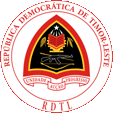
seit 2007,
Wappen von Osttimor,
Quelle: en:User:Vino4u,
Public domain, via Wikimedia Commons
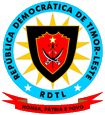
2002–2007,
Wappen von Osttimor,
Quelle: Jam123, CC0, via Wikimedia Commons

1935–1976,
Wappen von Portugiesisch-Timor,
Quelle: Wikipedia (D)

Das heutige Wappen von Osttimor wurde am 18.01.2007 angenommen und geht auf ein Wappen zurück, das vom Widerstand während der indonesischen Besatzung verwendetet wurde. Es symbolisiert den Erdball und auf ihm das Land Osttimor. Das Wappen zeigt die Silhouette des Berges Tatamailau in Schwarz mit einem gel-roten Rand, darin einen weißen fünfzackiger weißer Stern, ein rotes offenes Buch, vor einem goldgelben Zahnrad, zwischen zwei goldenen Reisähren, unterhalb eine Kalaschnikow gekreuzt mit einem goldenen timoresischen Speer (Diman), oberhalb eines goldenen timoresischen Bogens (Rama-inan). Das weiße Spruchband unterhalb des Berges zeigt in roter Schrift die portugiesischen Worte: "Unidade, Acção, Progresso" → "Einheit, Bewegung, Fortschritt". Der außen herum liegende, rotumrandete weiße Ring zeigt oben den Namen des Landes in Portugiesisch und unten die Abkürzung: "RDTL". Das vorher gültige Wappen wurde am 20.05.2002 offiziell angenommen. Es war eher ein Siegel, und zeigte innerhalb eines hellblauen Ringes, der den Namen des Staates trug einen goldenen Stern mit 14 Spitzen. Die Zahl 14 bezog sich wahrscheinlich auf die Anzahl der in der CNRM (ab 1998: CNRT) – einer Art Dachverband aller anti-indonesischen Widerstandsgruppen – zusammengeschlossenen Organisationen. Auf dem Stern lag ein schwarz-roter Schild mit verschiedenen Waffen und einen weißen Stern. Dieser Schild ist das Symbol der CNRM. Eine dieser CNRM-Gruppen war die FALINTIL, deren Motto zum Staatsmotto wurde, dargestellt in dem roten Spruchband unterhalb des Schildes: "HONRA, PÁTRIA E POVO" → "Ehre, Vaterland und Volk"
Quelle:
Wikipedia (DE),
Volker Preuß

Lage:
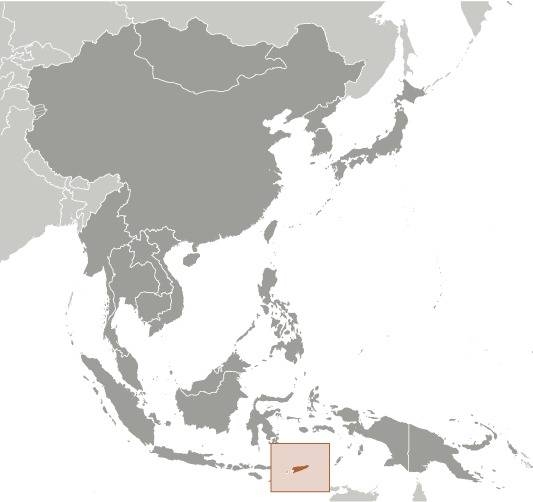
Quelle/Source: CIA World Factbook
Landkarte des Landes:
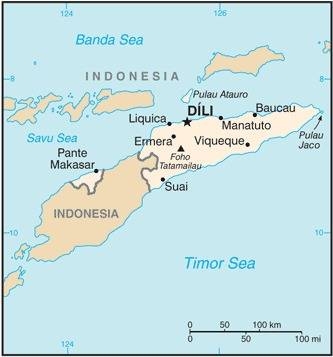
Quelle/Source: CIA World Factbook

Fläche: 14.919 km², davon Exklave Oecusse Ambeno 814 km², Insel Autaúro 140 km², Insel Jaco 8 km² (unbewohnt)
Einwohner: 1.340.434 (2022), davon ca. 75 % Austronesier (Malayo-Polynesier: Tetun, Mambai, Tokodede, Galoli, Kemak, Baikeno), ca. 25 % Papua-Melanesier (Bunak, Fataluku, Bakasai), einige Chinesen
Religionen: 97% Katholiken, 2% Protestanten
Bevölkerungsdichte: 90 Ew./km²
Hauptstadt: Dili, 310.600 Ew. (2022)
Amtssprachen: Portugiesisch, Tetum (Pidgin-Sprache)
sonstige Sprachen: Englisch, Bahasa Indonesia (Indonesisch)
Währung: 1 US-Dollar (US$) = 100 Timor-Centavos
Zeitzone: MEZ + 8 h
Quelle: Wikipedia (D)

Die Kolonialisierung der Insel Timor wurde seit dem Beginn des 16. Jahrhunderts
durch Portugal betrieben. Im Jahre 1586 wurde offiziell
die Kolonie Portugiesisch-Timor gegründet, jedoch nahmen die Niederlande
im Jahre 1688 den westlichen Teil der Insel in Besitz. Im
Jahre 1895 wurde die Insel formell zwischen Portugal und den Niederlanden
geteilt. Von 1942 bis 1945 war sie vorübergehend von Japan
besetzt. Nach Abzug der Japaner wurde auch im östlichen
Teil der Insel die Kolonialverwaltung wieder hergestellt. Gegen die
portugiesische Administration erhob sich vereinzelt bewaffneter Widerstand.
Am 11.06.1951 erklärte Portugal seine Kolonie Portugiesisch-Timor zu einer
Überseeprovinz und 1972 sogar zur Autonomen Region. Nach dem Zusammenbruch
der Militärregierung in Portugal im April des Jahres 1974 kam es in Osttimor
zu bewaffneten Auseinandersetzungen im Kampf um die politische Vorherrschaft
nach dem absehbaren Ende der portugiesischen Kolonialherrschaft. Auf der
einen Seite die "Revolutionäre Front für die Unabhängigkeit Osttimors"
(FRETILIN), auf der anderen Seite die "Demokratische Union von Timor" (UDT)
und die "Demokratische Volksassoziation von Timor" (APODETI), die wie einige
andere politische Gruppen den Anschluss an Indonesien anstrebten. Die
FRETILIN brachte den größten Teil des Territoriums von Osttimor unter ihre
Kontrolle und proklamierte am 28.11.1975 die “Demokratische Volksrepublik
Osttimor”. Die proindonesischen Gruppierungen erklärten einen Tag später
(29.11.1975) den Anschluss von Osttimor an Indonesien
Am 07.12.1975 griffen reguläre indonesische Truppen in den Bürgerkrieg ein und
besetzten Osttimor. Die proindonesischen Gruppierungen bildeten am 17.12.1975 eine
Übergangsregierung. Die UNO forderte den Rückzug der indonesischen Truppen,
jedoch gliederte Indonesien Osttimor mit Gesetz vom 17.07.1976 als 27.
Provinz in das indonesische Staatsgebiet ein. Portugal informierte die UNO
im April 1977, dass es seit August 1976 die effektive Souveränität über
seine Kolonie nicht mehr ausübe, die gewaltsame Annexion durch Indonesien
aber nicht anerkenne. Die UNO bestätigte mit Resolutionen in den Jahren
1977, 1978 und 1979 das Recht des Volkes von Osttimor auf Selbstbestimmung
und Unabhängigkeit sowie seine Legitimation, dafür zu kämpfen. Die FRETILIN,
die FALINTIL und andere Gruppen setzten den bewaffneten Kampf gegen die
indonesischen Besatzer fort, und immer wieder kam es zu Massenprotesten der
Bevölkerung. Am 12.11.1991 kam es in der Haupstatdt Dili im Anschluss an
eine Massendemonstration zum sogenannten "Santa-Cruz-Massaker". Dabei wurden
mindestens 100.000 Osttimoresen auf dem Gelände eines Friedhofs ermordet.
Das Volk von Osttimor erreichte nach Aufständen im Zuge eines Machtwechsels
in Indonesien im Jahre 1999 – Ende der Ära des Präsidenten Suharto – die
offizielle Durchführung einer Volksabstimmung über die volle Unabhängigkeit
von Indonesien oder Autonomie innerhalb des Indonesischen Staates. Präsident
Habibi, der Nachfolger von Suharto, anerkannte und respektierte den
Volksentscheid, welcher mit 80 % zugunsten der Unabhängigkeit von Osttimor
endete. Janana Guzmão, der Führer der FRETILIN, wurde freigelassen. Darauf
hin überzogen Proindonesische Milizen mit Hilfe der Indonesischen Armee das
Land mit einer Terrorwelle, der im August und September 1999 etwa 1000
Osttimoresen zum Opfer fielen. Am 20.09.1999 landeten schließlich
UNO-Truppen in Dili, um dem Terror ein Ende zu machen. Die indonesische
Volksversammlung erkannte nun die Unabhängigkeit Osttimors von Indonesien
offiziell an. Der Kampf gegen den Milizenterror ging aber weiter. Unter
anderem aus diesem Grund konnte Osttimor seine Souveränität nicht sofort
vollständig wahrnehmen und wurde in einer Übergangszeit durch die UNO
verwaltet. Osttimor erlangte die volle Unabhängigkeit am 20.05.2002. Erster
frei gewählter Präsident des Landes wurde Janana Guzmão. Der
Unabhängigkeitskampf der Osttimoresen gegen Indonesien kostete von 1976 bis
2002 ca. 250.000 Menschen das Leben.
Quelle:
UNPO,
Wikipedia (DE),
Volker Preuß

Der Name der Insel "Timor" kommt aus der malaiischen Sprache und bedeutet "Osten". Damit wurde die geographische Lage der Insel östlich der Hauptinsel Java beschrieben. "Osten" im Sinne von "Ost"-Timor heißt auf portugiesisch "Leste", auf Tetum "Loro Sa'e" und in Bahasa Indonesia (Indonesisch) "Timur". Daraus ergeben sich die Namen des Landes: "Timor Leste", "Timor Loro Sa'e", "Timor Timur".
Quelle:
Wikipedia (DE),
Volker Preuß


![]()
























